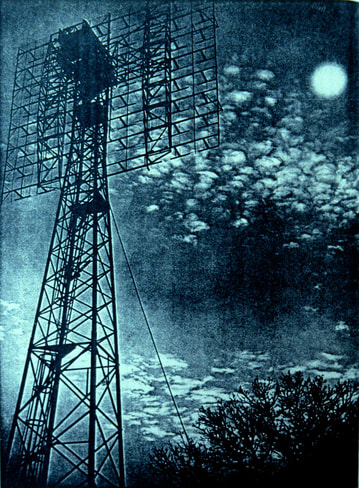PROJECT DIANA

On January 10, 1946, a small group of scientists at Camp Evans in Wall, NJ, using a modified SCR-271 bedspring radar antenna and amping up the power, broadcast a series of radar signals towards the moon and each time picked up an echo 2.6 seconds later--the time required for light to travel to the moon and back.
In our post-moonwalk era, when amateur radio enthusiasts with powerful transmitters, sensitive receivers, multi-element antennas, and moon trackers can establish two-way communication using the moon as a reflector in their own back yards, it may be difficult to recapture the excitement of that moment. Yet in some respects it was an even more stunning scientific milestone than the moonwalk: By demonstrating that the earth's atmosphere could be pierced and that communication with extraterrestrial bodies was possible, it marked the birth of radar astronomy and initiated the age of space exploration.
In a tacit salute to Project Diana, space scientists have continued the tradition of naming their projects after Greek and Roman gods and goddesses.
In our post-moonwalk era, when amateur radio enthusiasts with powerful transmitters, sensitive receivers, multi-element antennas, and moon trackers can establish two-way communication using the moon as a reflector in their own back yards, it may be difficult to recapture the excitement of that moment. Yet in some respects it was an even more stunning scientific milestone than the moonwalk: By demonstrating that the earth's atmosphere could be pierced and that communication with extraterrestrial bodies was possible, it marked the birth of radar astronomy and initiated the age of space exploration.
In a tacit salute to Project Diana, space scientists have continued the tradition of naming their projects after Greek and Roman gods and goddesses.